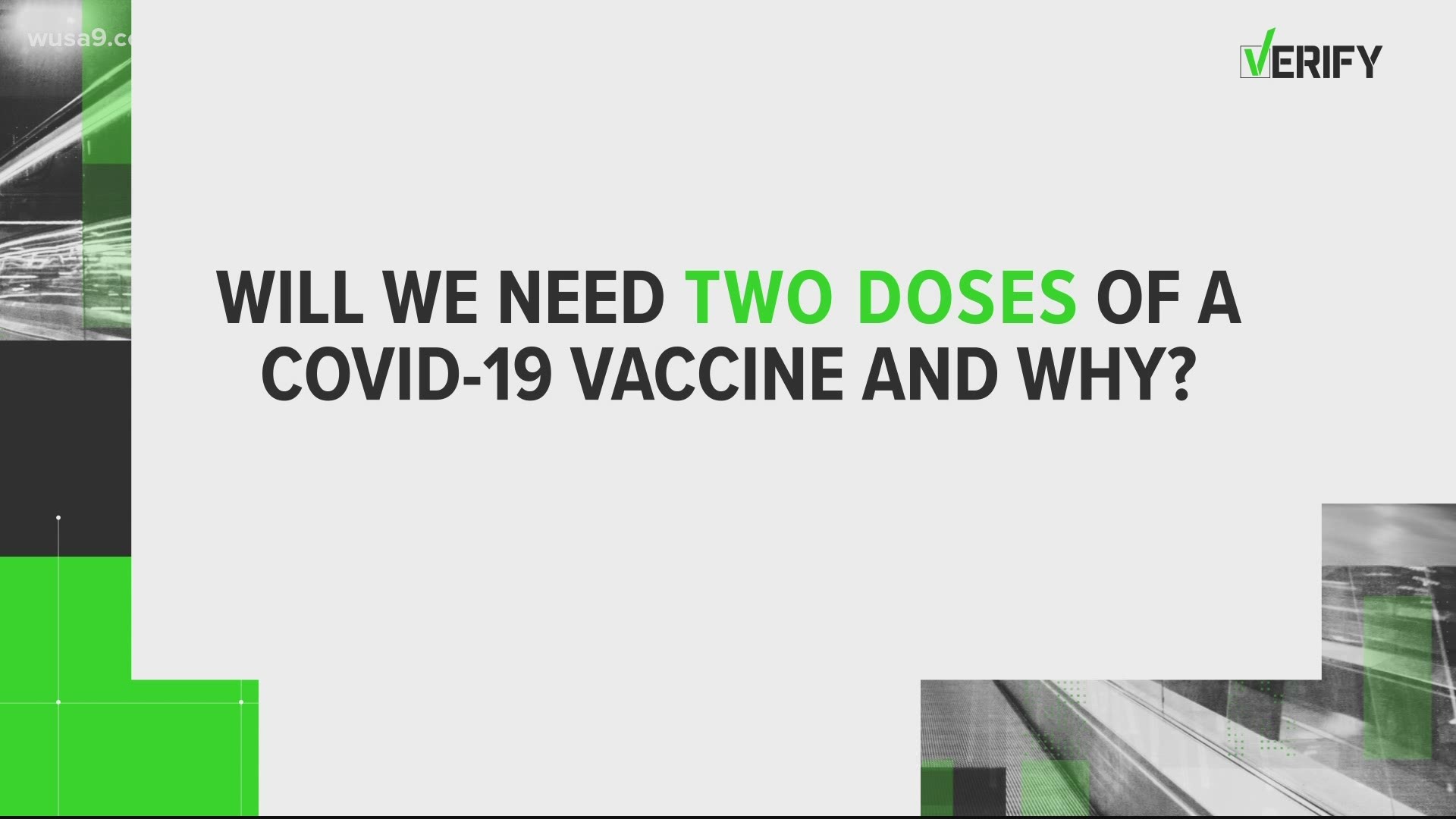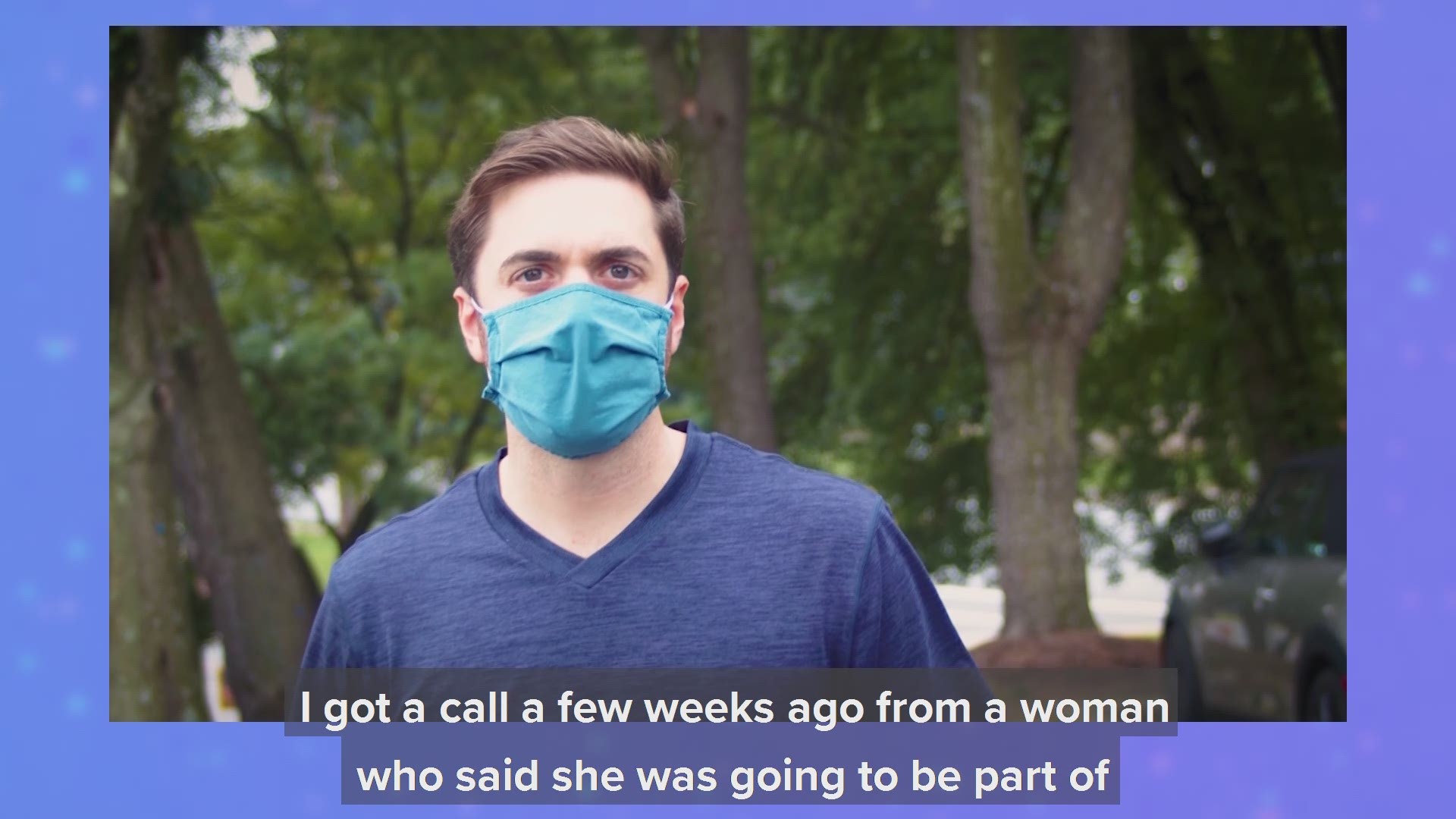WASHINGTON — When will there be a coronavirus vaccine?
It's the question world leaders and senior health experts have been grappling with since before the disease became a global pandemic, and it's the same question society is asking nearly a year after the first cases were reported in Wuhan, China.
The VERIFY team looked at primary sources and listened to scientific experts to answer your questions on development, the anticipated timeline, and roll-out of a COVID-19 vaccine.
Let's start with the phases of vaccine development.
The Food and Drug Administration is tasked with regulating vaccines in the United States.
Under U.S. Code, the FDA can use unapproved medical products or unapproved uses of approved medical products in an emergency to help diagnose, treat of prevent serious or life-threatening conditions. They can do this through something called "Emergency Use Authorizations."
In March 2020, the Secretary of the Department of Health and Human Services determined that COVID-19 justified the use of EUAs. All the EUAs issued have been posted on their website. So far, things like testing kits, PPE and ventilators have received EUAs.
Currently, there have been no emergency use authorizations issued to any COVID-19 vaccines.
The agency has published guidance specific to vaccine EUAs in October.
What does the FDA need to see in order to issue an EUA for a vaccine?
In an October 27 USA TODAY opinion piece, Dr. Peter Marks, the director of the FDA's Center for Biologics Evaluation and Research, and self-described "FDA point person on COVID-19 vaccines," stressed the need for transparency.
"How this EUA standard is applied of course depends on the product and how it will be used — if a product will be used to treat hospitalized patients for whom there is no other therapy, the potential benefits may outweigh the risks even if there is uncertainty about the effectiveness and there are real, but acceptable, safety concerns," Marks wrote.
According to Marks, the FDA will only issue an EUA for a COVID-19 vaccine if there is a well-designed phase 3 clinical trial.
"On the other hand, where a vaccine will be given to healthy individuals, the risk-benefit analysis is different. For a COVID-19 vaccine that could be administered to millions of individuals, including healthy people, FDA will only issue an EUA if a vaccine has demonstrated clear and compelling efficacy in a large well-designed phase 3 clinical trial, much like would be required for a BLA [Biologics License Application]."
That "process will not be rushed," Marks went on to say.
There are certain benchmarks for vaccine trials. Namely, phase 1, phase 2, phase 3, sometimes phase 4.
But before any of that can happen, extensive research is done.
"Vaccine development begins in the laboratory before any tests in animals or humans are done," the FDA wrote in a 2011 factsheet. "If laboratory tests show that a vaccine has potential, it is usually tested in animals. If a vaccine is safe in animals, and studies suggest that it will be safe in people, clinical trials with volunteers are next."


Here's what those clinical phases look like:
Phase 1: A small group of volunteers receives the vaccine, around 20-100 people, and scientists learn more about dosage and potential side effects. Scientists may start to learn about the vaccine's effectiveness. If no serious side effects are detected, scientists move on to phase 2.
Phase 2: A larger group of about a couple hundred volunteers participate. Scientists study what the short-term side effects are and see how the dosage relates to an immune response.
Phase 3:Hundreds or thousands of volunteers are observed. Results from vaccinated people are compared to those who received a placebo or some other vaccine, to learn more about side-effects, effectiveness and safety.
"The trials and all other data must show that the vaccine’s benefits outweigh the potential risks for people who will be recommended to receive the vaccine," the FDA writes in the factsheet. "Only if a vaccine’s benefits are found to outweigh its potential risks does the FDA grant a license for the vaccine, allowing it to be used by the public."
After the clinical trials, there are several safety procedures in place to monitor safety and effectiveness, before an EUA is granted.
"Once an application or request for authorization is received, our career scientists will review the safety and efficacy data; they will also look to ensure that there is adequate manufacturing data to ensure the vaccine's quality and consistency," the agency Commissioner Dr. Hahn said in a Twitter video.
He continued, "following that review we plan on seeking advice at a public meeting from the Vaccines and Related Biological Products Advisory Committee comprised of external scientific and public health experts who have been screened for ethics conflicts. FDA career staff will then take the committee input into account as they make their decision regarding the application or EUA request."
The EUA request should also include a plan for continued monitoring of patients, Hahn explained.
Who are some of the big names behind the COVID-19 vaccines? (Many of which are in Phase 3 of clinical trials)
Johnson & Johnson/ Janssen Pharmaceutical Companies is currently in Phase 3 of their trial.
They are enrolling 60,000 volunteers from all over the world, but primarily North and South America, for their study on the safety and efficacy of a single dose vaccine. In October they temporarily paused clinical trials "due to an unexplained illness in a study participant," but later that month announced they would resume after reporting that "no clear cause has been identified." On October 23 they wrote, "Based on the information gathered to date and the input of independent experts, the Company has found no evidence that the vaccine candidate caused the event." Early 2021 is when they anticipate their vaccine can roll out its first batches, under an EUA.
Moderna, which is collaborating with the National Institute of Allergy and Infectious Diseases (part of NIH) is currently in Phase 3 of their trial. As of October 22, 30,000 participants were enrolled in the trial. The company announced that it will decide whether or not to request an EUA after a 2-month follow-up.
Pfizer/ BioNTech is currently in phase 3 of their trial and already reporting promising results. On November 9, the company announced that their two-dose vaccine was more than 90 percent effective. The study enrolled 43,538 participants. They have also announced a timeline for applying for an EUA, during the third week of November if everything goes according to plan.
AstraZeneca/ Oxford is currently in Phase 3. On October 23, the company announced that the FDA had authorized a restart of the trial after taking a voluntary pause in early September to "allow the examination of safety data by independent monitoring committees." The company anticipates results from their late-stage trials "later this year."
Novavax is currently in phase 2 in the United States, but hopes to move to Phase 3 in the U.S. and Mexico by late November. The company moved into Phase 3 in the U.K. in September in partnership with the U.K. Government's Vaccines Taskforce, and will expand to 15,000 participants, according to an October 27 update.
Sanofi/ GSK is currently in phase 1/2 of clinical trials in the U.S. with 440 participants enrolled. First results are expected in early December, and they hope to begin a Phase 3 trial by the end of 2020.
Bottom line: When do top health experts say we can expect a COVID-19 vaccine for the public?
During an October 21 discussion with NIH Director Dr. Francis Collins, Dr. Anthony Fauci said he predicts that by November or December, they'll know whether one or more of the vaccines are safe and effective.
"That being the case...we have pre-ordered and pre-developed the doses already so that when that decision is made, we can hit the ground running and start to vaccinate even by the end of this year," Fauci said. "Some of the individuals were in those higher priority group."
One week later, Fauci said that according to projections, doses for the public could be ready by later December-early January.
"We will know sometime in December whether or not we have a safe and effective vaccine," Fauci said. "And practically speaking, when will we be able to deploy that vaccine and get it to those individuals who need it the most... I would think conservatively it would be sometime at the very end of December or the beginning of January."
According to the CDC, the first supply of the vaccine could become available before the end of 2020:
"When a vaccine is authorized or approved in the United States, there may not be enough doses available for all adults. Supplies will increase over time, and all adults should be able to get vaccinated later in 2021. However, a COVID-19 vaccine may not be available for children until more studies are completed."


